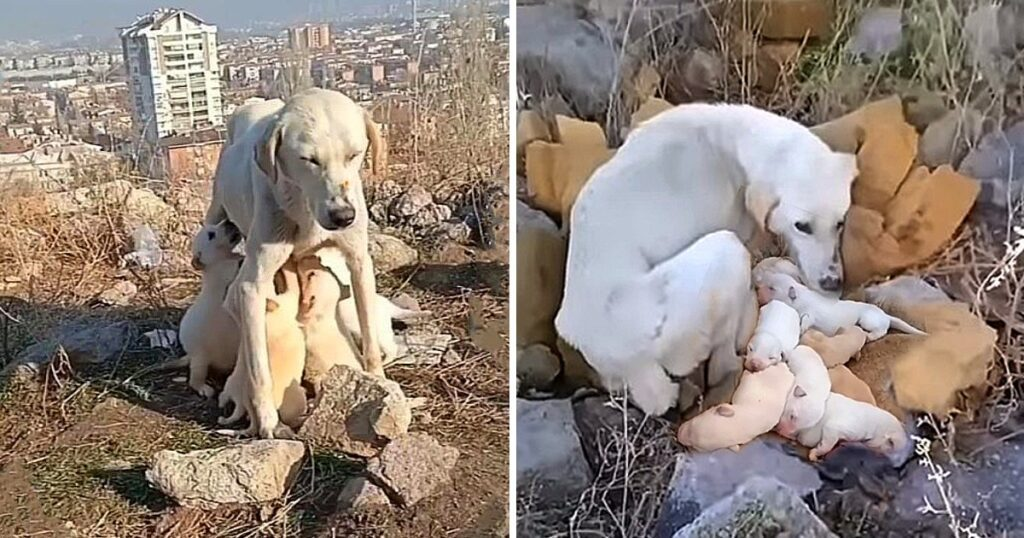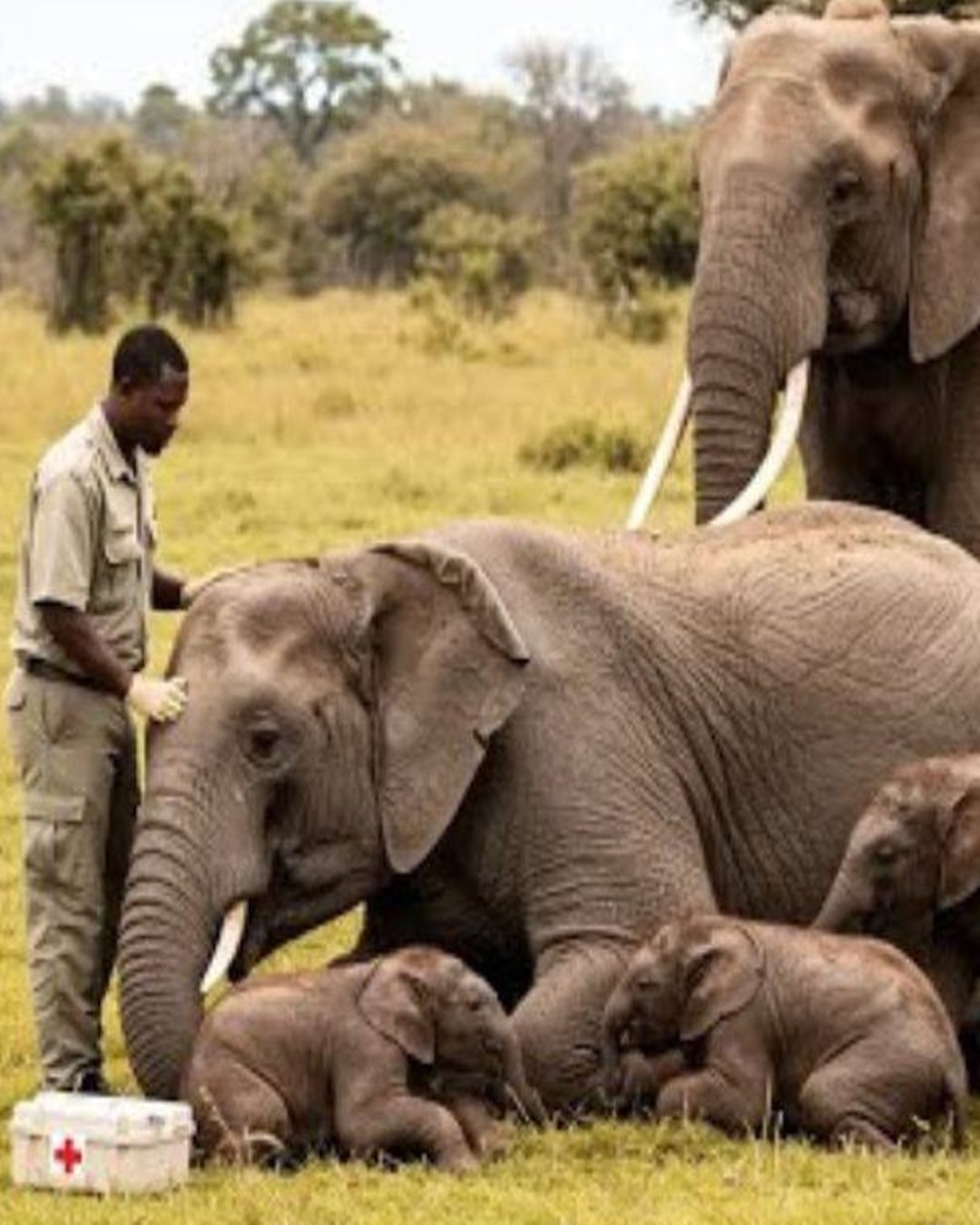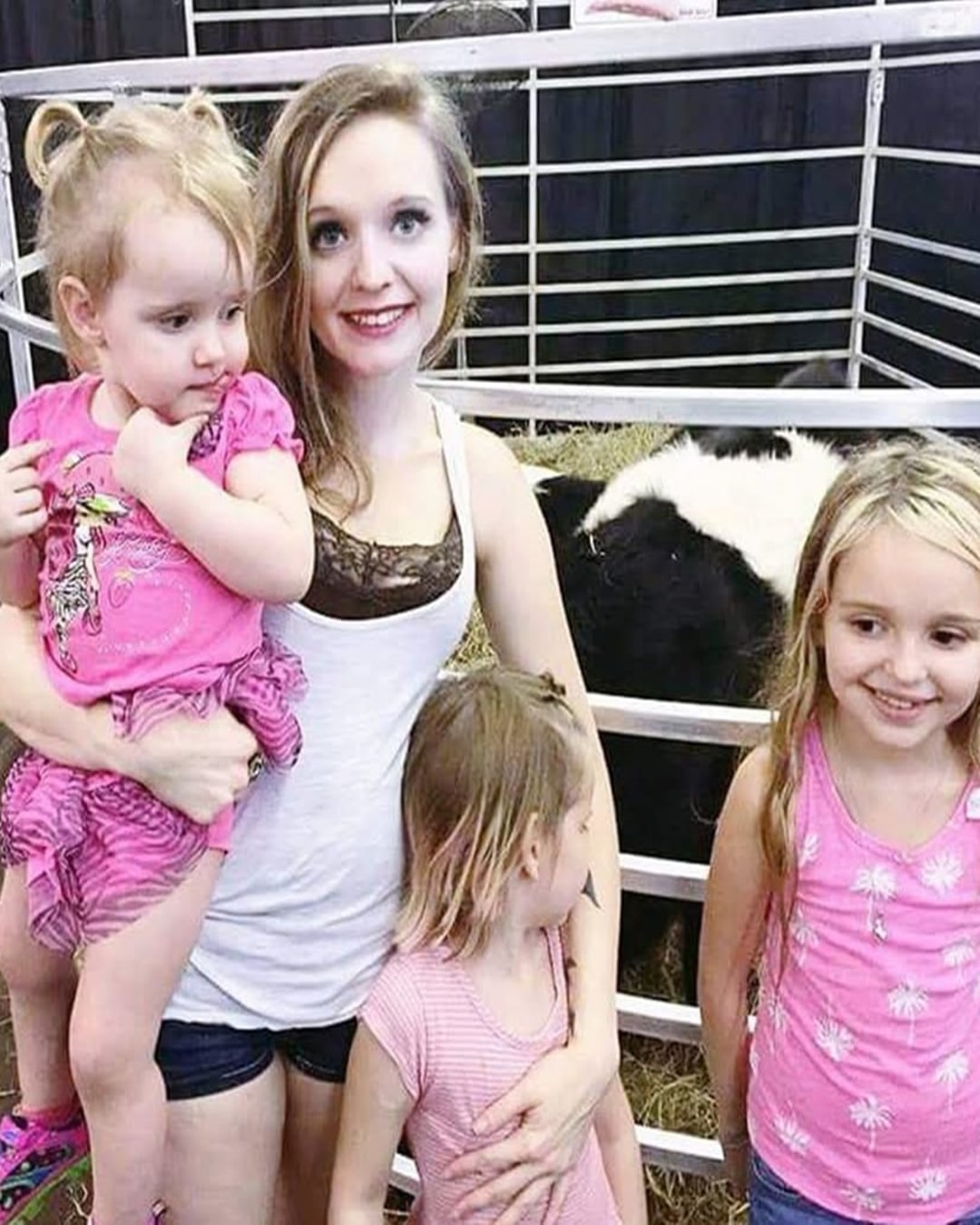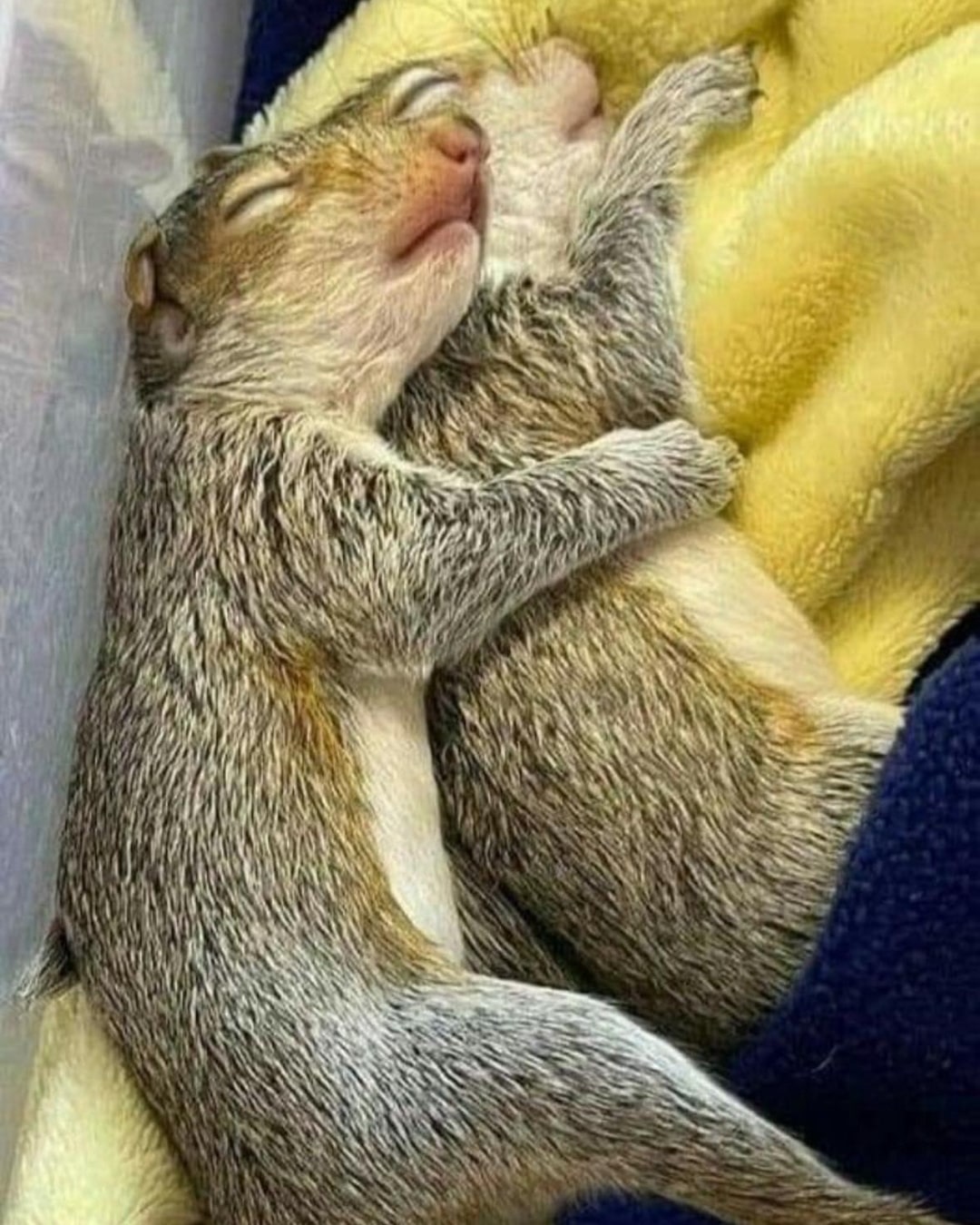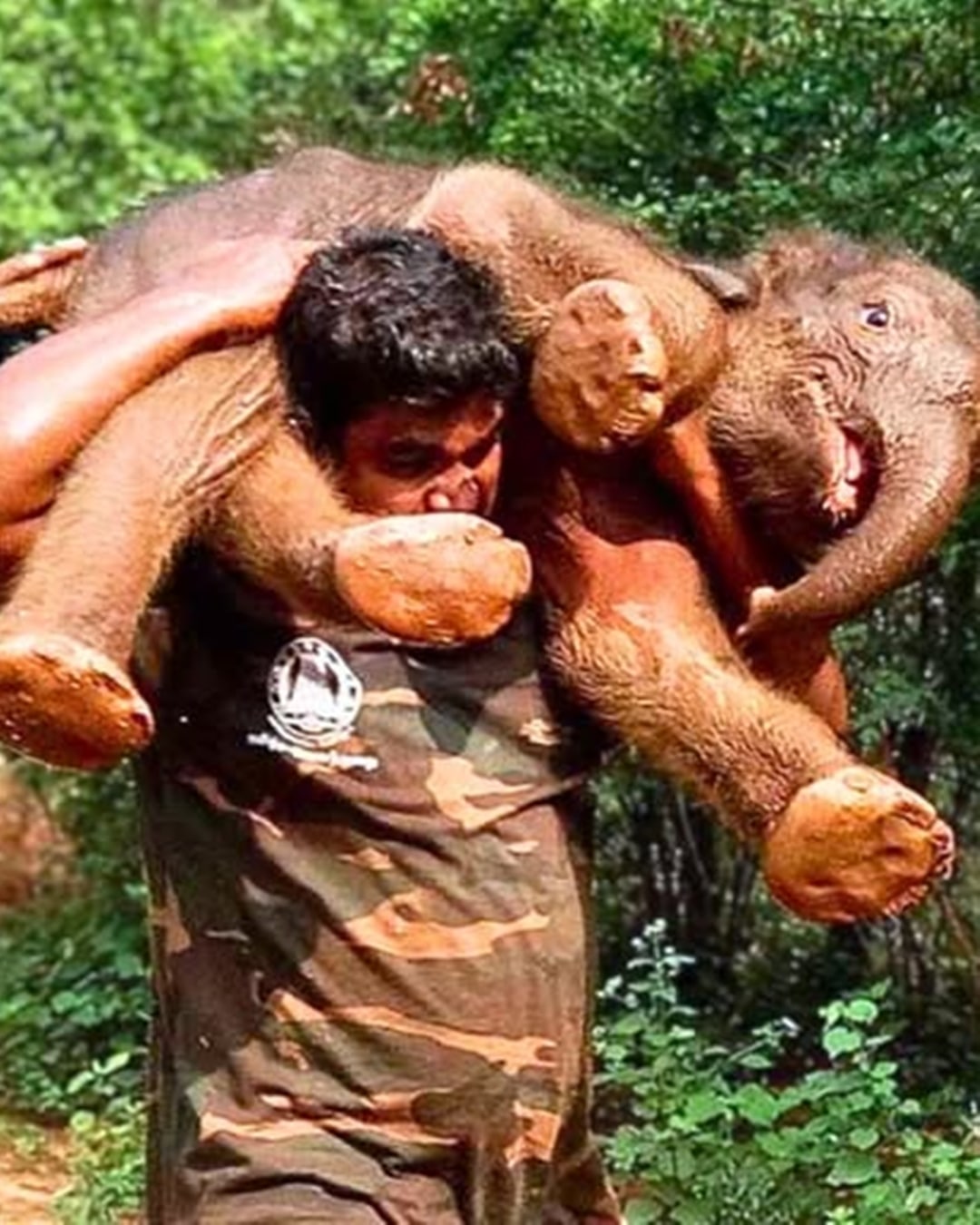At dawn, the savannah fell silent as a mother elephant gave birth—not to one calf, but two. Elephant twins are so rare that many rangers never see it in a lifetime. The newborns trembled by their mother’s side as she touched them gently with her trunk, claiming them as her own.
Then the herd gathered. One by one, massive shapes formed a living circle around the family, a fortress of protection. From above, it looked ceremonial, as if the elephants themselves understood they were witnessing a miracle.
Despite her exhaustion, the mother nudged her calves to rise. Wobbly legs straightened, small trunks reached outward, and their first steps were greeted by a chorus of trumpets echoing across the plains. It wasn’t just birth—it was a celebration.
For days, the herd cared for them together. Allomothers stood guard, shared the burden, and proved once again that survival for elephants is rooted not only in strength, but in unity and love.
Two rare lives. One herd’s embrace. A reminder that nature still writes the most breathtaking stories.
The quiet reverence that had settled over the herd was more than mere curiosity; it was the activation of an ancient, deeply ingrained protocol for survival and community. In the elephant world, a birth is a momentous occasion for all, but a twin birth is an event of almost mythological significance. Biologically, it is a perilous anomaly. An elephant mother is built to sustain one calf, to provide enough milk for one, and to shield one small body from the ever-present dangers of the savannah. Two calves doubles the burden, stretches resources perilously thin, and presents a challenge that a lone mother could almost never overcome. But an elephant is never truly alone. The immediate, instinctual formation of the protective circle was a testament to this fact. It was a living, breathing demonstration of a social structure so complex and empathetic that it rivals any in the natural world.
At the heart of this fortress stood the matriarch, the herd’s living library of wisdom and experience. Her own calves were long grown, but her role as a leader and a grandmother was now more critical than ever. She communicated with low, infrasonic rumbles—vibrations felt through the ground more than heard—calming the new mother and coordinating the herd’s movements. She would be the one to decide when it was safe to move, which waterholes were fullest, and how to navigate the territory to maximize food intake for the nursing mother. The other females, the “allomothers” or “aunties,” took their positions without instruction. These were sisters, cousins, and older daughters, each understanding their role implicitly. They would share the immense responsibility of childcare, acting as sentinels, babysitters, and mentors. They formed a multi-layered defense, a buffer between the vulnerable newborns and a world of lions, hyenas, and the encroaching threat of human activity.
For the twin calves, the world was a bewildering forest of colossal, loving legs. Their first days were a symphony of new sensations: the coarse, comforting texture of their mother’s skin, the sweet taste of her milk, the constant, gentle nudges from the trunks of their many aunts. They learned the language of the herd not as a formal lesson, but through osmosis. They felt the rumble of a warning call and instinctively pressed closer to their mother. They heard the joyful trumpet of a greeting and felt the collective excitement ripple through the family. Their clumsy, oversized ears flapped as they mimicked the adults, and their small, unwieldy trunks explored everything with a child’s innocent curiosity. One might stumble, only to be steadied by a nearby aunt’s trunk wrapping gently around its belly. The other might wander a few feet too far, only to be patiently herded back into the center of the circle. They were never just their mother’s calves; from the moment they drew breath, they were the herd’s children.
This shared responsibility was the only reason this miracle had a chance to endure. The mother, despite her immense strength, was deeply vulnerable. The physical toll of birthing and now nursing two calves was immense. She needed to consume hundreds of pounds of vegetation and drink dozens of gallons of water each day, a task made difficult by the need to constantly attend to her offspring. Here, the herd’s support became tangible. While she nursed one calf, an auntie would stand guard over the other. Other females would break down higher branches, making the most nutritious leaves accessible for her. They created a seamless system of support that allowed her to focus her energy where it was needed most. It was a quiet, efficient ballet of cooperative parenting, a strategy honed over millennia to ensure the survival of the next generation. The burden was shared, and in that sharing, it became manageable.
This heartwarming spectacle, however, does not exist in a vacuum. It is a precious scene of hope unfolding on a stage of increasing fragility. For every elephant family celebrating a birth, there are others being torn apart by poaching and habitat loss. The ancient migratory routes that the matriarch holds in her memory are now often bisected by fences, farms, and human settlements, creating conflict and danger. The very unity and fierce loyalty that makes an elephant herd so strong also makes them vulnerable; a threat to one is a threat to all, and they will defend their family to the death. The birth of these twins, therefore, is more than just a rare natural event; it is a symbol of defiance. It is a powerful statement from the natural world that life, in all its resilience and beauty, persists.
The story of these twins becomes a microcosm of the entire species’ struggle and spirit. Their survival depends entirely on the wisdom and love of their family—a family that is a link in a chain stretching back through generations. The knowledge held by their matriarch was passed down from her mother, who learned it from hers. They are the inheritors of an immense cultural legacy. To watch them is to understand that we risk losing not just a species, but a society, a culture with its own traditions, language, and deep emotional bonds. The trumpets that echoed across the plains to celebrate their first steps were a chorus of hope. It is a hope that we, as the stewards of this planet, must choose to hear. The fortress of love they were born into can protect them from the lion, but it is up to us to protect them from the far greater dangers of a changing world, ensuring that nature can continue to write such breathtaking stories for generations to come.
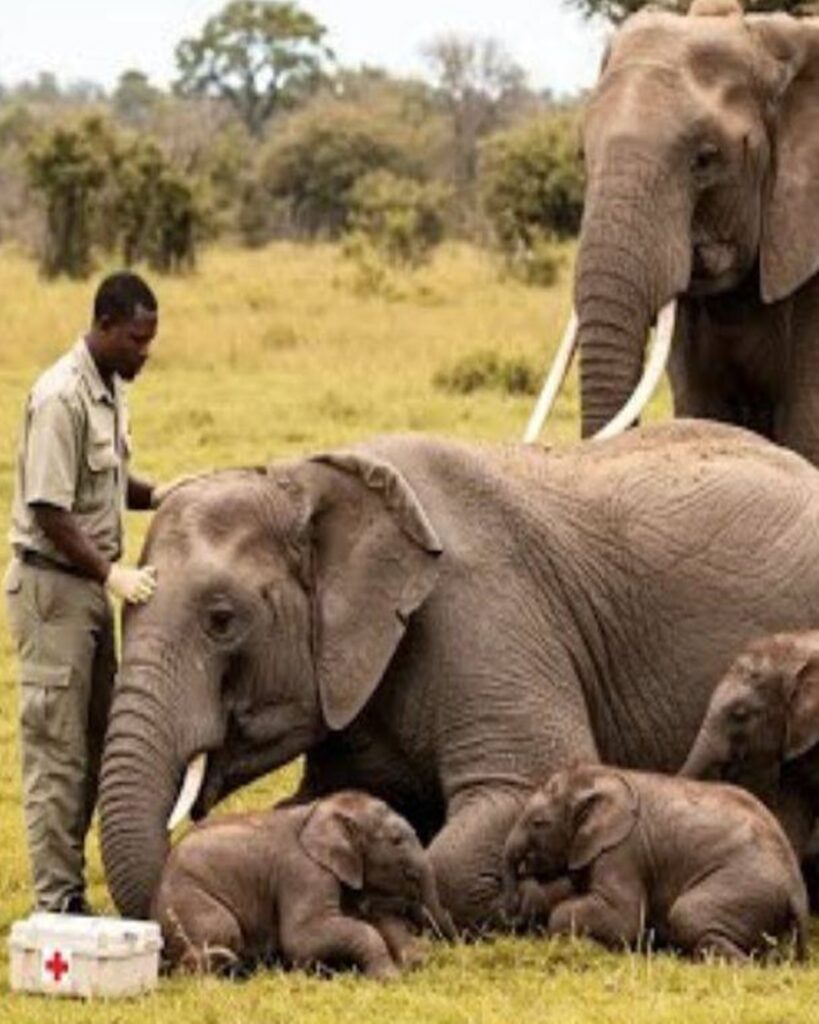
At dawn, the savannah fell silent as a mother elephant gave birth—not to one calf, but two. Elephant twins are so rare that many rangers never see it in a lifetime. The newborns trembled by their mother’s side as she touched them gently with her trunk, claiming them as her own. Then the herd gathered. One by one, massive shapes formed a living circle around the family, a fortress of protection. From above, it looked ceremonial, as if the elephants themselves understood they were witnessing a miracle. Despite her exhaustion, the mother nudged her calves to rise. Wobbly legs straightened, small trunks reached outward, and their first steps were greeted by a chorus of trumpets echoing across the plains. It wasn’t just birth—it was a celebration. For days, the herd cared for them together. Allomothers stood guard, shared the burden, and proved once again that survival for elephants is rooted not only in strength, but in unity and love. Two rare lives. One herd’s embrace. A reminder that nature still writes the most breathtaking stories.


